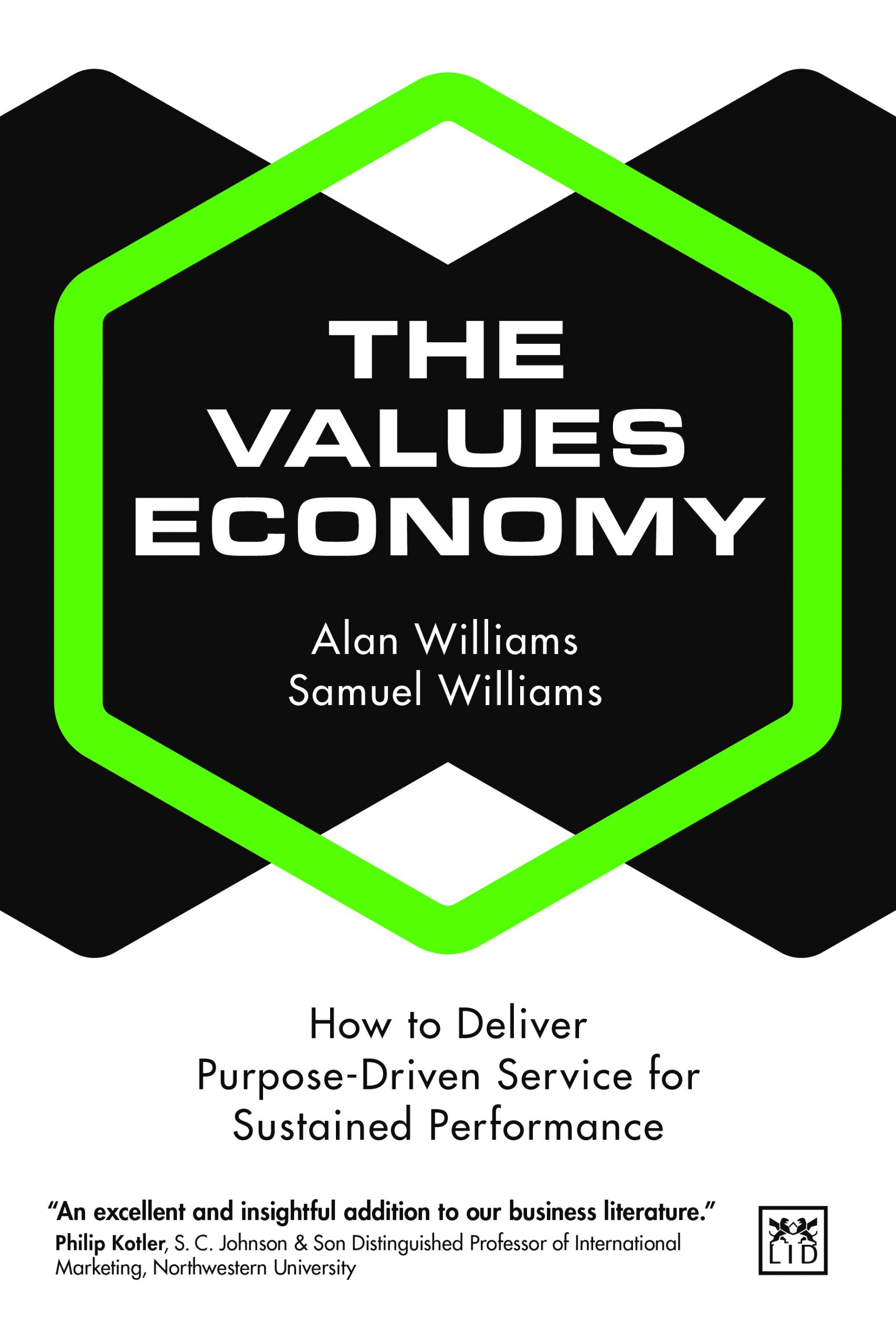It is funny what draws you to a book – the cover, the strap line, the blurb, the author, personal recommendations, a favourable book review. For me what drew me in was the title. Values in a business, in my experience, range from being the infographic next to the lift in reception, to being lived and breathed in everything an organisation does. I was instantly intrigued as what the authors have to say on the economic angle of values. I favour values based work – I choose to work only with those whose values aligned to my own. I give a lot away and work with the Third Sector as much as I can. I wondered what would be said on values as an economy – a fair exchange of value. Curiously, I first heard about this book on Twitter as Simon Heath did the illustrations for this book. I like Simon’s work and have hired his value a few times. Perhaps the values economy is not about living your Values, but also rather proving your value? It is funny what draws you to a book.
So with all these thoughts about Values and value in my mind I delved in.
The contents page is a delight. It is a really well structured book in four parts – Groundwork, Framework, Practice and Implementation – across 21 chapters. A strongly structured business book is a must for the typical busy person, in my opinion.
My curiosity about Values and value was address in the Foreword, written by Marketing Professor, Philip Kotler. The distinction was thus described;
A value represents what a company hopes to create, communicate and deliver as a value proposition to a target market for a profit.
Values represent what a company hopes to exhibit that it deeply cares about in conducting its business.
The transparency so early on makes it very clear to the reader what they will get from this book. Kotler goes on to introduce how the book will discuss Brand Identity, Employee Engagement and Customer Experience under the author’s Servicebrand moniker. Again all very useful; it certainly drew me in as a reader – but more on Servicebrand later.
And so to the book proper. Does it deliver what is enticingly promises?
To be honest, the first line made me wince;
We are living in extraordinary times – volatile, uncertain, complex, ambiguous.
This VUCA phrase has been around for ages, and has been reframed by other writers more effectively too. And whilst yes we are living in unprecedented times, it felt like an old phrase to read in a new book. There were regular references to Covid 19, so the book wasn’t old hat at all, but it is funny how your emotions can rise and fall when reading a book. I sighed, forgave them and read on.
I am glad I did. The book was pacey, well-constructed, practical and focused. I enjoyed the interplay of the real stories with the more academic chapters of framework and structures thinking. There are case studies throughout which give useful stories to see themes of the chapters come to life. I got a lot of inspiration and ideas as the pages flicked by. The read was easy and full of energy (always a bonus I think). It was written in an accessible, almost conversational style. Simon’s imagery was subtle but appropriate, adding to the curiosity and engagement.
I found the premise of the final part on implementation spot on; starting with context. The book invites you to be curious and try some of the ideas within. It is not necessarily offering a holy grail of Servicebrand, rather it offers a robust framework and more than enough examples to truly embed the theory side into the reality of the reader. The messages were clear and even profound;
“What is needed instead is demonstrable action showing that an organization puts into practice what it has always preached about its brand’s purpose and values… We suggest that a more appropriate and effective approach is for organizations to think pragmatically about how their brand values and purpose can authentically support the COVID-19 or any other situation, no matter how big or small the deed, and then empower and encourage their stakeholders to spread the word.” Page 264
This is one of many very obvious, yet afore to unwritten suggestions this book carries.
There’s always a downside, right? For me that is Servicebrand. The book pushes the author’s Servicebrand model throughout, and I get it – it is the author’s sell – and it is a seemingly good model, brought to life in the book. The model is based around brand identity, customer and employee experiences, wrapped around process and systems. All good. But the fact the word Servicebrand was always written in capitals really jarred with me; it made the book seem salesy. It detracted from the message. It is a really small thing and should not put you off the book, as there are many useful things within the chapters, but it was a detractor for me.
In this book about values, the value I received was well worth the reading time. This is a book everyone in business today should be reading, especially if you are in PR, and especially if you not! It helps you scrutinise how an organisation is perceived, how to build a brand and how to live out your values and Values in the world – whether you want to, or not.
Michelle Parry-Slater, L&D Director, Kairos Modern Learning







